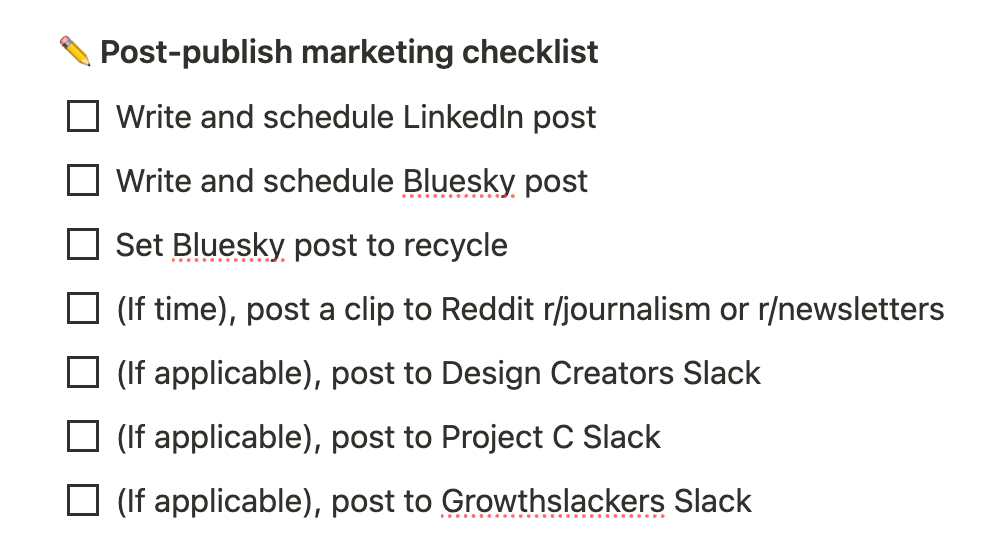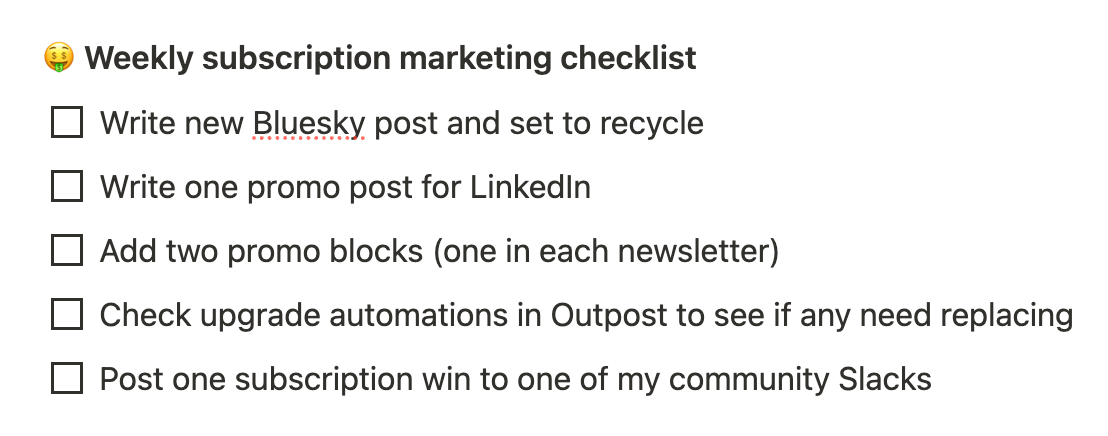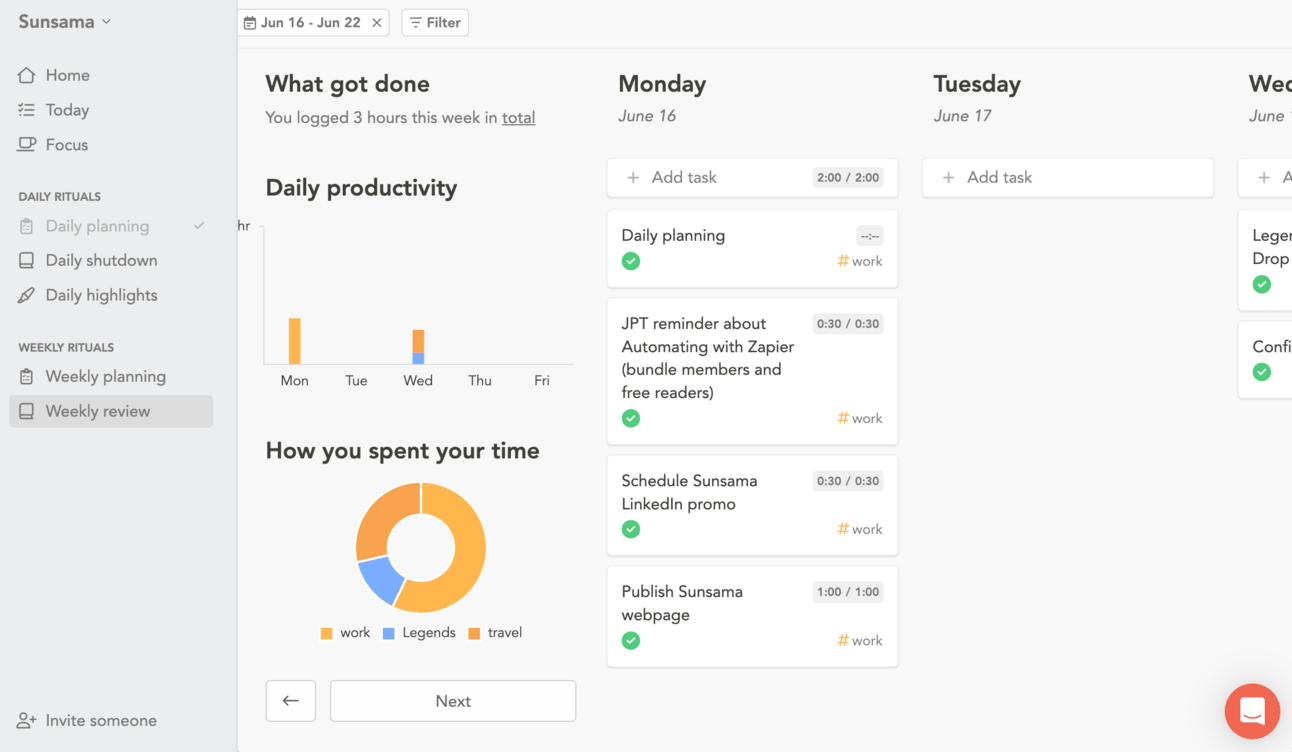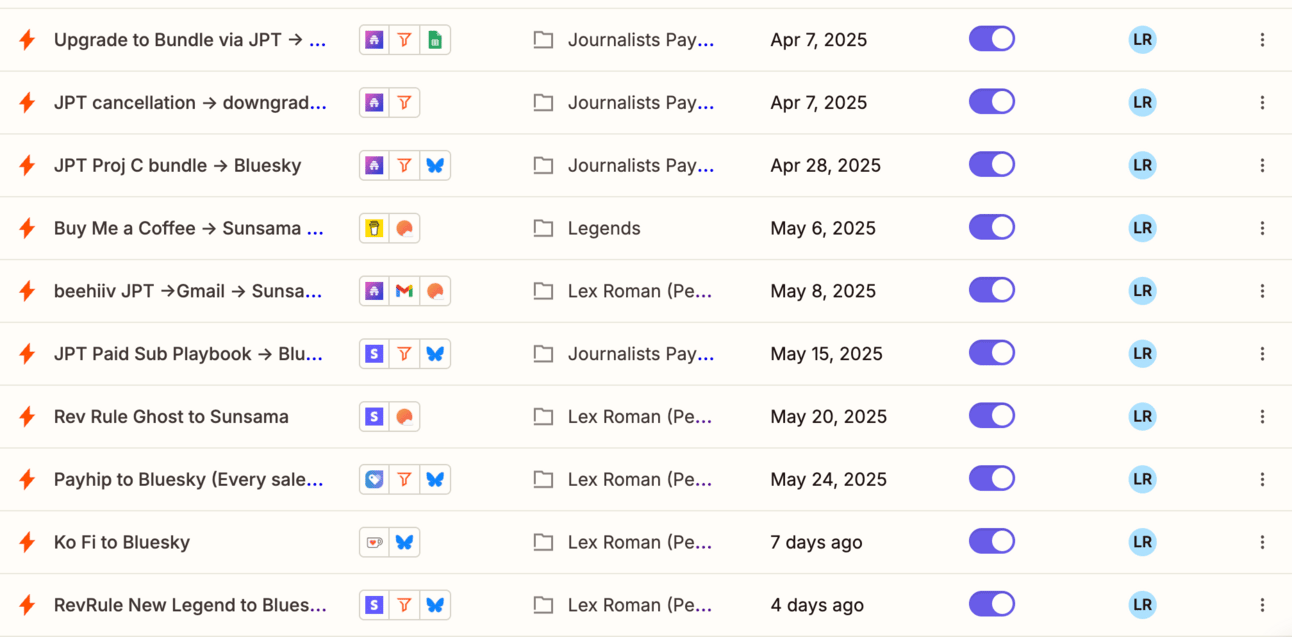- Journalists Pay Themselves
- Posts
- But I don't want to market
But I don't want to market
How to manage the marketing for your paid newsletter business when you don't wanna do it
In partnership with: Outpost for more member revenue
“I wish my writing did the marketing for me.”
DON’T WE ALL.
Unfortunately, even when a story takes off in other outlets or on social media, that’s not always going to translate to new paid subscribers.
That’s because you don’t have any trust yet with brand new people. They are *very unlikely* to be ready to pay you. They need to warm up. Get to know your work.
Given that we do, in fact, have to market our stories and subscriptions, what’s the best way to work it into your week?
Today, I’m sharing five strategies for managing your marketing workload.

This newsletter is produced in partnership with Outpost 🪐
Speaking of managing your marketing, have you heard of Outpost?
Outpost is a marketing and monetization tool for Ghost. They’re an independent publishers cooperative, not bankrolled by billionaires. They work directly for publishers and all publishers get a say in what they build.
I just moved one of my newsletters over to Ghost and I’m thrilled to be using Outpost there to automatically send upgrade, retention and win back messages to readers. If you’re running a Ghost publication, and you want to expand your revenue potential this year, you should really check out Outpost.
Five strategies for managing your marketing
There’s lots of things we have to do as media business owners that aren’t our favorite tasks. I always enjoy Riley MacLeod’s real time reflections on this journey because there are some “eat your vegetables” parts to it and there are also some “I learned something and I’m glad I know this now” parts as well.
I don’t mind marketing much since I’m a marketer, but I too would love to do LESS of it! What makes it manageable for me is that I plan for it in everything I do. If I’m launching a course, the prep is not just what it takes to make the course, but what it’s going to take to market the course. Marketing is 75% of the work of online courses. If I’m promoting a subscription, I know my time will be split 50% running that subscription and 50% marketing that subscription. The internet is loud. People are busy. It takes a lot of messages to get people’s attention.
Here’s five ways to cope with your distaste for marketing by sizing it down and systematizing it. Choose one and try it out this week!
Strategy 1: Make a repeatable checklist
You have two types of marketing in your media business. You have story-based marketing and you have revenue-generating marketing. You can create checklists for both.
Your checklist could include social networks to post to, promotional blocks that should be in every email, communities to cross post to, podcasts to pitch and more.
The key to a good checklist is that it must be TASKS NOT PROJECTS. Each task should take you like 30 minutes or less. This checklist can sit in your project tracker, in your digital to do list, in your phone notes app or inside your content calendar.
I have mine set up as a checklist template in Notion (where I do my content calendar) so it regenerates every time I create a new issue. [See also how to create a page template in Notion and keep in mind that Notion is FREE.]
 Example post publish checklist |  Example subscription marketing checklist |
Strategy 2: Plan it ahead of the week or month
Actively make space for your marketing when planning your week or month. This might be blocking off a day or afternoon for marketing tasks OR you might just include it with other work estimates, meaning that if a story takes 3 hours to write and 1 hour to market, that’s 4 hours I need to block off.
I do an editorial calendar for every month, and inside that calendar, I also add my LinkedIn posts, all sponsored posts and promotional campaigns. I start by slotting in my regular issues, then I add in sponsored posts, then I think about major promos I should be doing, then paid subscriber communications and lastly, regular grow-the-audience posts. When I do my weekly planning, I transfer those monthly deadlines into my to do list, using an integration between Notion and my daily planner Sunsama (affiliate link).
Setting aside an hour at the end of every week and at the end of every month to plan your big and small promotions will help your marketing be more systematic and it may even enable you to batch some of the work.

My weekly review in Sunsama, my digital planner
In partnership with Sunsama ☀️
I use Sunsama to manage my days and weeks. It’s the first digital planner I was finally able to stick to. I love how it helps me estimate how long tasks will take and I love “focus mode” which keeps me on task. It’s REALLY GOOD for anyone with ADHD.
Sunsama changed how I spend my time and it gave me back several hours a week. If you’re struggling to fit it all in, give Sunsama a try and learn how to lighten your load.
Strategy 3: Timebox your effort
Timeboxing is a strategy I learned from app developers. Whenever we were building an app and we weren’t sure how long something would take, we would “timebox” the problem and give it 2 hours or so to try to solve it. That helped us ensure we weren’t wasting hours not making any progress.
You can use timeboxing as a way to limit how much marketing you’re going to do too. Timebox 1 hour or 2 hours a week to run through your marketing checklist, promote your stories, promote your revenue streams, write a campaign, or schedule some social posts and call it a job well done! It’s much easier to fit in your marketing work when you have an estimation of how long it will take.
I would aim for 2 hours of marketing a week and you can split it up in 2-4 timeboxes with as little as 30 minutes.
Strategy 4: Choose three main promotion channels
Cut down on how wide you’re going with marketing! You probably don’t need to be posting and promoting everywhere. If your marketing checklist is looking super long, you definitely have room to cut some stuff.
Pay close attention to which channels are actually feeding you traffic and paid subscribers. Choose the top three from your analytics and make those your priority.
It’s likely that just a couple channels are driving most of your business. For me, it’s LinkedIn, so that’s the main channel I promote to, followed by private communities. This doesn’t just need to be social media channels either. Podcasts, livestreams, forums, Reddit and cross-promotion with other writers could all be contenders here.
Strategy 5: Use tools that make marketing easier
There’s a boatload of marketing tools out there! Use them! They can help you expedite your planning, recycle posts, auto-send emails to your readers, remind you to do stuff, connect platforms together and more.
Automation is your friend when it comes to reducing your marketing workload and the more you automate your marketing, the more you can spend your time actually doing the stuff you enjoy.
Some of the marketing tools you should know about include:
Outpost for auto-sending promotional emails to readers and donors (Ghost only)
Notion for content calendars, project planning, checklist making and more
Sunsama for daily planning and recurring tasks/checklists (affiliate link)
Publer for recycling social media posts (affiliate link with 10% discount)
Buffer for scheduling social media posts if you don’t want to pay for Publer
Right Message for personalized marketing messages and better list segmentation
Senja for testimonial collection (affiliate link)
Texts which lets you connect every inbox to one system (including all social DMs)
Fillout for reader surveys and paid subscriber onboarding (affiliate link)
Zapier for automating nearly anything (check out some of the recipes we came up with recently)
I use most of the tools above and many of them offer generous free tiers so you can try them out long before needing to upgrade.
Marketing is what you make of it
Admitting you have to do marketing is the first step to making it not such a chore.
It’s very hard to outsource marketing with you’re solo or small. You really have to crack your own promotion formula first. Part of that early work is developing your own marketing system, with repeatable processes and tools that someone else could take over. Even if you don’t plan to hand off that work, these systems will help you focus your time and reduce wasted efforts.
Don’t get sad that you have to market. Just make it part of your workflow. Try one of the strategies above and let me know how it works for you.



Reply